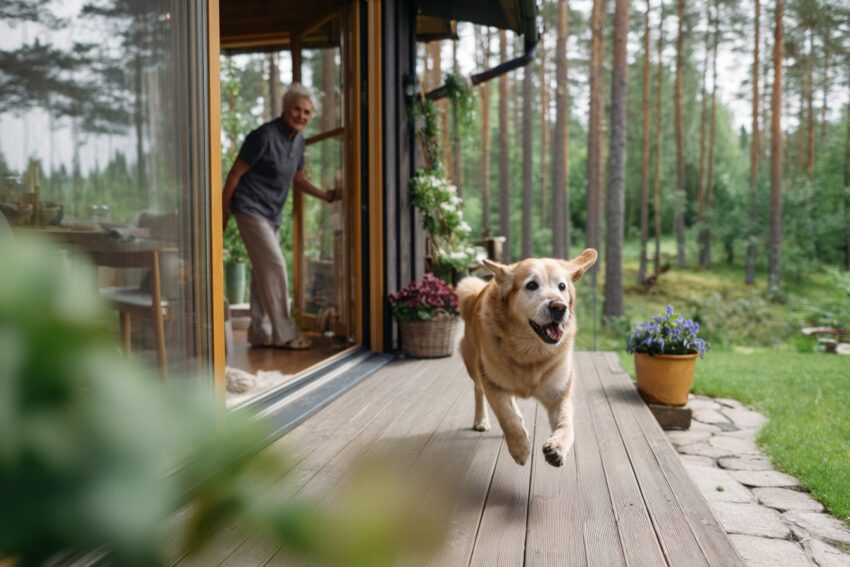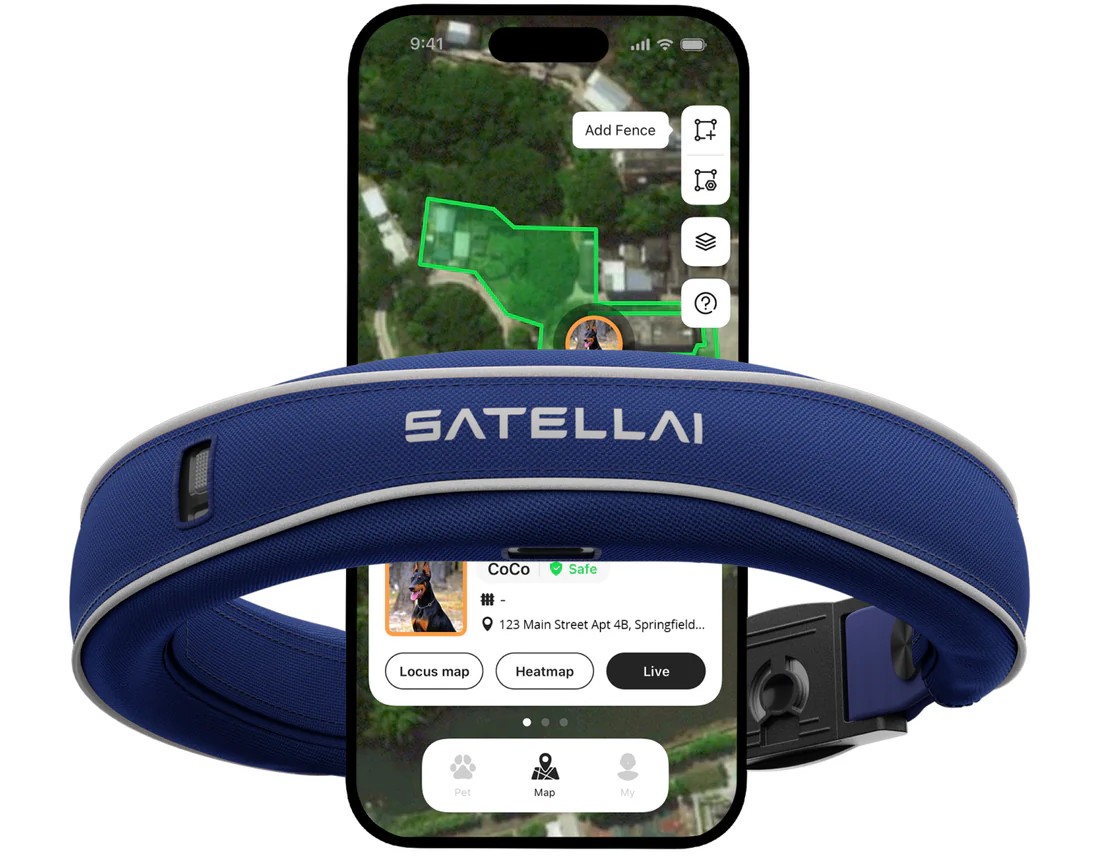One second you’re opening the front door… the next, your dog is halfway down the street like they’re training for the zoomie Olympics.
Sound familiar?
If you’re wondering how to get your dog to stop running off, you’re not alone—and you’re not a bad pet parent. Whether it’s the lure of a squirrel or a sudden fear response, there are ways to stop the madness and bring calm (and safety) back to your life.
Let’s walk through it—step by step.
🐾 TL;DR — Got a Dog That Darts? Start Here
- 🐾 Most dogs bolt from boredom, fear, or chase-drive instincts.
- 🏡 Make your home or yard more fun than “the great escape.”
- 🎯 Train with “stay” and “come” using positive reinforcement only.
- ⛔ Never chase—dogs think it’s a game (or panic and bolt faster).
- 📍 GPS collars give peace of mind when training isn’t enough.
Keep scrolling for expert strategies, recall training tips, and our top GPS collar picks to protect your adventurous pup.
Fences, gates, and indoor barriers still matter.
Never call your dog to punish or end fun.
Track & find your dog fast if they slip out.
Why Dogs Run Off in the First Place
It’s easy to feel hurt, frustrated, or even betrayed when your dog dashes away the moment the door opens. But here’s the truth:
Your dog’s not being disloyal. They’re just… being a dog.
There are usually two main reasons dogs run off—and once you understand them, you can start to fix the problem at the root.
What’s Going on in Your Dog’s Mind?
-
“Oooh, what’s THAT?!” Whether it’s a squirrel, another dog, a garbage truck, or an open field—curiosity is a powerful driver. For some dogs, anything new = must explore now.
-
“I’m scared—get me outta here.” Fireworks, yelling, sudden noises, or unfamiliar guests can cause fear-based fleeing. Some dogs are true flight risks when spooked.
⚠ Heads-up: If your dog escapes often, it’s not just a behavior issue—it’s a safety risk. One wrong street crossing or aggressive encounter can change everything in a second.
So the question becomes: How do we remove the triggers and train better responses?
Let’s break it down—starting with your dog’s physical environment.
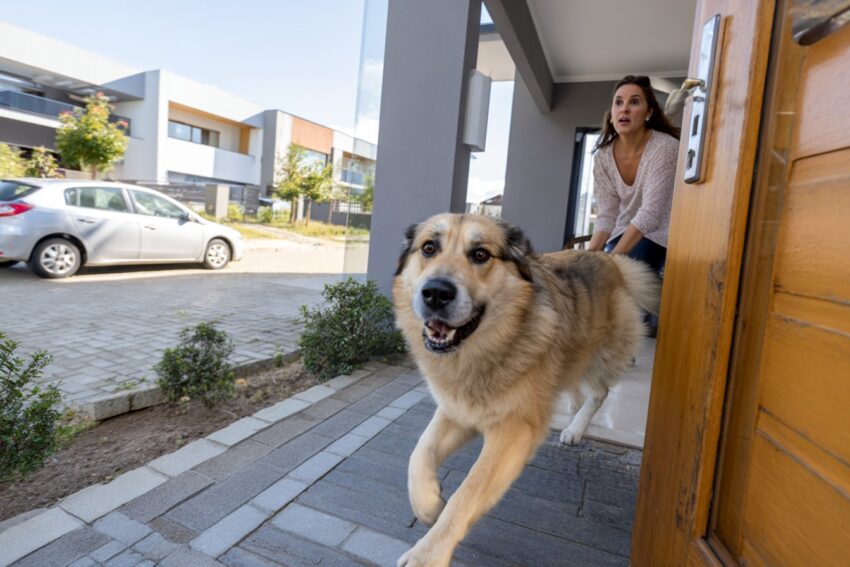
Escape-Proof Your Dog’s Environment
(Because Even the Best Training Needs Backup)
Before you teach commands or invest in gear, you need to make sure your home isn’t accidentally giving your dog an open invitation to bolt.
Even if your dog loves you deeply, that doesn’t always compete with an open gate and a squirrel in motion.
How to Reinforce Your Setup:
Secure all fences and gates. Check for weak spots, low spots, or loose latches. Some dogs are jumpers. Others are diggers. Know which one you have.
Use baby gates indoors. If your dog tends to dash out the front door, block access with a gate or playpen. No shame in a physical barrier—it’s smart.
Minimize triggers near exits. Move furniture away from windows if your dog barks at every movement. Cover up fence gaps if there are loud dogs next door.
Burn off extra energy. A tired dog is a less impulsive dog. Walks, sniff sessions, tug-of-war—make their home life more exciting than whatever’s out there.
Hot Tip:
If you work long hours or can’t walk as often as you’d like, consider a dog walker or doggy daycare a couple times a week. Boredom is one of the most common reasons dogs escape.
And here’s the truth: Even with the best setup, accidents happen. That’s where GPS collars come in. We’ll cover our top 3 favorites shortly—stay tuned.
Train with “Stay” and “Come” Commands
When your dog bolts, yelling “COME!” shouldn’t feel like tossing words into the wind. That’s where training—real, consistent, distraction-proof training—comes in.
Teaching “stay” and “come” doesn’t just help with escapes. It builds trust, boosts safety, and makes everyday life smoother.
Start With the Basics:
-
Use high-value treats. Not the everyday stuff. Break out the cooked chicken or freeze-dried liver. Your dog should want to stay or come back to you.
-
Train “stay” in calm, low-distraction areas first. Have your dog sit, hold your palm up and say “stay.” Take one step back. If they hold position, reward like they just won the lottery.
-
Add time + distance gradually. Don’t go from 1 foot to 20 feet. Build up over days. This builds reliability—the real win.
-
Practice “come” as a game. Start indoors. Call “come!” in a happy voice, then reward with enthusiasm. Your dog should feel like returning to you = instant party.
⚠ Big Don’t: Never use “come” when you’re about to do something your dog dislikes (like nail trims or crate time). Otherwise, you’re poisoning the word.
Use the “Come” Command Correctly
(And Stop Accidentally Training Your Dog to Ignore You)
Here’s the thing—“come” is only powerful if your dog wants to obey it.
Too many pet parents unknowingly turn “come” into a negative trigger. Call them when it’s bath time. Call them when it’s crate time. Call them when it’s time to leave the park.
Your dog’s smart. They learn fast. And if “come” always means “something bad or boring is about to happen,” guess what? They’ll stop listening.
How to Make “Come” a Word Your Dog Loves:
Never use it before something they dislike. Instead, go get them silently for those moments—or use a different cue.
Pair it with only good things. Treats, praise, toys, snuggles. Even if they took forever to come back, still reward the fact that they did.
Avoid using “come” when you’re angry. Your dog will associate your tone with danger—not safety.
Train with energy. Clap your hands. Smile. Squat low. Make yourself magnetic and safe, especially when calling from a distance.
Hot Tip:
Think of “come” as a trust word—not just a command. You’re saying, “It’s safe. You’ll be rewarded. You’re okay here.”
Don’t Chase Your Dog
It’s instinct, right? Your dog bolts and every fiber in your body screams: GO AFTER THEM.
But chasing your dog does one of two things—and neither of them help:
-
It turns it into a game. “Oh cool, we’re playing tag!” Suddenly, you’re the slow human toy and they’re loving the chase.
-
It freaks them out. If your voice is panicked or angry, your dog might feel punished or threatened. So they run faster—to get away.
Instead of Chasing, Try This:
-
Drop to the ground. This reverses the energy. Many dogs get curious or concerned and come back to check on you.
-
Run the other way. Call them excitedly and jog away from them. It triggers the follow reflex instead of flight.
-
Keep treats or a squeaky toy handy. High-value distraction can override the bolt instinct if used fast enough.
-
Train in fenced areas first. Build reliability where failure isn’t dangerous. Once they’ve mastered recall, you can trust it more in the wild.
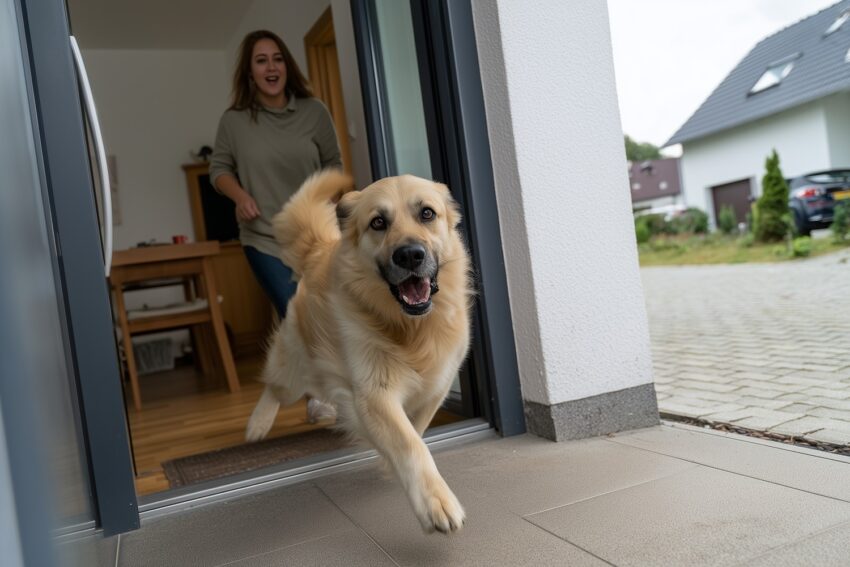
Hot Tip:
The real key is prevention—doors, fences, training—but in the moment, staying calm and staying smart is your best move.
Neuter or Spay (If Applicable)
(Because Hormones Don’t Care About Recall Training)
Sometimes the reason your dog keeps running off has nothing to do with fear or fun—it’s biological.
An intact dog (especially males) will often ignore everything—including you—if they catch the scent of a potential mate. No amount of “come” will override nature in that moment.
Why Spaying or Neutering Can Help:
Reduces hormone-fueled escape attempts. Dogs in heat or dogs following a scent trail are acting on instinct—not disobedience.
Lowers risk of certain cancers and health issues. It’s not just about behavior. There are real health perks, too.
Decreases roaming, marking, and aggression in many cases.
🩺 Vet Tip: If you don’t plan to breed your dog, spaying or neutering is a safe, responsible choice that can make training easier and protect your dog’s health.
GPS Collars: Peace of Mind When Training Isn’t Enough
You’ve escape-proofed your yard. You’ve trained the recall. You’ve even stopped chasing. But let’s be real—no system is perfect.
That’s why so many pet parents now add GPS dog collars as a backup. It’s not a replacement for training—it’s insurance for your heart.
What to Look For in a GPS Collar:
- Real-time tracking with accurate location updates
- Geo-fence alerts when your dog leaves a designated area
- Long battery life for multi-day peace of mind
- Durability and water resistance for all-weather dogs
Our Top 3 GPS Picks for Escape Artists:
|
The Halo Collar 4 GPS Dog Fence lets you create, edit and store fences, starting at 30 x 30 feet, and is now compatible with smaller dogs (neck sizes ranging from 8-30.5". While the invisible fence features help prevent dogs from leaving the yard in the first place, the almost-pin-point accurate GPS tracking features help owners find lost dogs quickly. GUARANTEED BEST PRICE SAVE $100 WHEN YOU SHOP THROUGH OUR LINK |
Get peace of mind about your dog’s safety and location with PetSafe® Guardian® GPS 2.0 Dog Fence + Tracking, the most advanced wireless GPS dog fence with real-time tracking. No buried wires, no complicated installation—just safe, easy and reliable containment wherever you go. GUARANTEED BEST PRICE Save $60 off $300 with coupon code TECHNO60 |
The SATELLAI Smart GPS Dog Collar combines real-time tracking, customizable virtual fences, and AI-powered health insights in one sleek, durable design. With global coverage, indoor beacons, and up to 7 days of battery life, it’s built for active dogs and peace-of-mind pet parents. GUARANTEED BEST PRICE Save $100 off with coupon code TECHEXCL |
The Halo Collar 4 GPS Dog Fence lets you create, edit and store fences, starting at 30 x 30 feet, and is now compatible with smaller dogs (neck sizes ranging from 8-30.5". While the invisible fence features help prevent dogs from leaving the yard in the first place, the almost-pin-point accurate GPS tracking features help owners find lost dogs quickly.
GUARANTEED BEST PRICE
SAVE $100 WHEN YOU SHOP THROUGH OUR LINK
Get peace of mind about your dog’s safety and location with PetSafe® Guardian® GPS 2.0 Dog Fence + Tracking, the most advanced wireless GPS dog fence with real-time tracking. No buried wires, no complicated installation—just safe, easy and reliable containment wherever you go.
GUARANTEED BEST PRICE
Save $60 off $300 with coupon code TECHNO60
The SATELLAI Smart GPS Dog Collar combines real-time tracking, customizable virtual fences, and AI-powered health insights in one sleek, durable design. With global coverage, indoor beacons, and up to 7 days of battery life, it’s built for active dogs and peace-of-mind pet parents.
GUARANTEED BEST PRICE
Save $100 off with coupon code TECHEXCL
Want extra peace of mind?
If your dog is a runner, the right tech can make all the difference. Check out the top picks in our guide: Best Dog GPS Trackers
What to Do If Your Dog Does Escapes
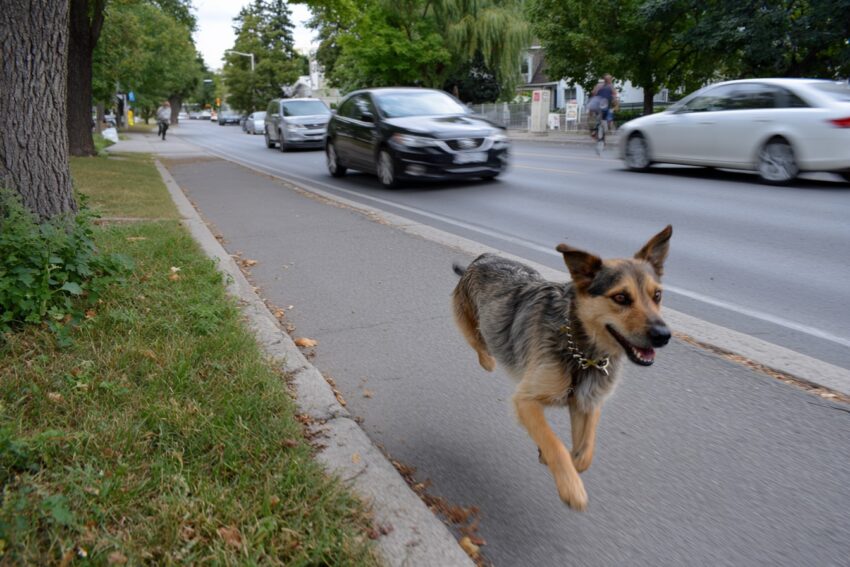
Even with training, barriers, and GPS tech, dogs are still dogs—and escape can still happen. The key is not to panic.
Every second counts, but a clear head gets your dog home faster.
Here’s What to Do First:
-
Grab your phone and leash. You’ll need both—one to track (if you have a GPS collar), one to secure your dog if you spot them.
-
Use your recall cue—cheerfully. Get low. Clap. Call your dog like it’s the best party ever. They’ll respond better to joy than fear.
-
Alert neighbors or use local social media groups. Post a quick photo and description. The more eyes, the better.
-
Check favorite spots. Dogs often run toward familiar parks, smells, or paths. If they’ve escaped before, try those same places again.
-
Leave scent markers at home. Place worn clothing or your dog’s blanket outside—many dogs return when they catch a whiff of home.
You’ve Got This—And So Does Your Dog
Training your dog to stop running off isn’t about perfection—it’s about progress. Every time your pup chooses to stay instead of bolt, every “come” they obey, you’re building something better: trust, safety, and peace of mind.
Remember, mistakes happen. Tools like GPS collars and barriers help. But your presence, consistency, and care? That’s what really keeps your dog coming home.
What’s Worked for You?
Have you trained a door dasher or outdoor explorer? Drop your tips or success story in the comments—your experience might help another pup stay safe.
Author
-
Hey there, I'm Jamey, and I've been an animal lover for as long as I can remember. Growing up on a 50-acre farm in Ontario, Canada, I was surrounded by a menagerie of furry friends, from beloved cats and dogs to goats, horses, cows, and even chickens. Now, I call Victoria, British Columbia my home, and my heart belongs to my adorable Balinese cat, Milo. When I'm not editing blog posts here at DogVills, I enjoy helping solo entrepreneurs with their passion projects and online marketing. Over the years, I've also ventured into creating and selling various blogs.
View all posts
